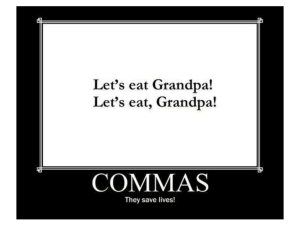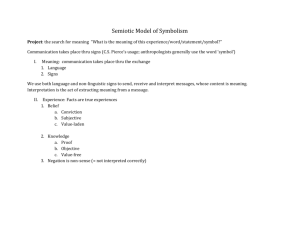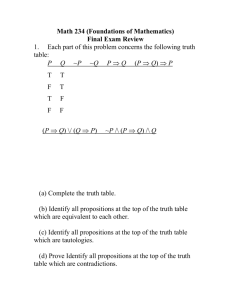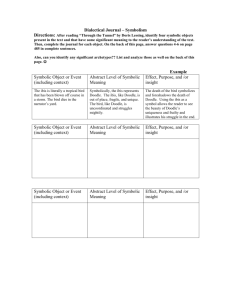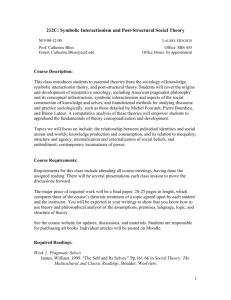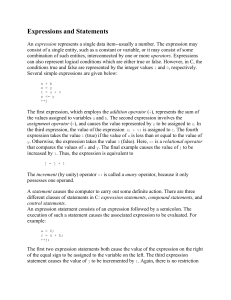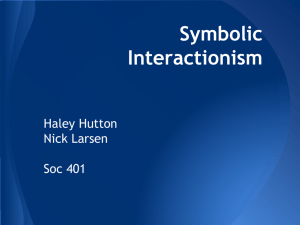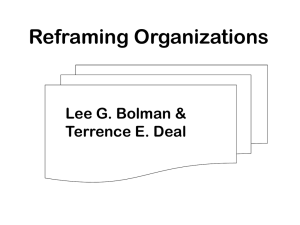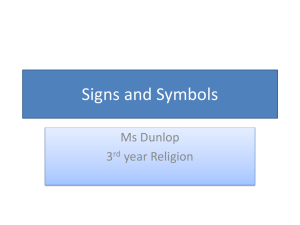Chapter 8 * Symbolic Logic
advertisement
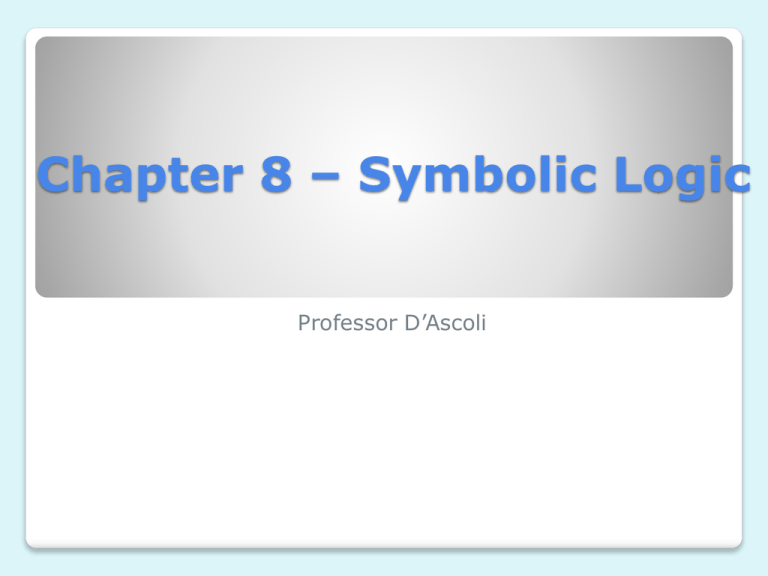
Chapter 8 – Symbolic Logic Professor D’Ascoli Because the appraisal of arguments is made difficult by the peculiarities of natural language, logicians have formulated an artificial, symbolic language system that is not encumbered by linguistic defects. In some respects, it helps logicians to accomplish intellectual tasks without having to think as much. Thus, symbolic logic is not tied to syllogisms, but can go directly to assessing the internal structure of propositions and arguments. Symbolic Logic Simple and compound statements are logically connected in a few simple ways. In English, we use “and,”“not,”“or,” and “if……then.” Modern symbolic logic uses symbols to represent these relationships more precisely. Conjunction (“and”) is symbolized with a dot (•). Negation (“not”) is symbolized with a tilde ~. Disjunction (“or”) is symbolized with a wedge (∨). Material implication (“if……then,” or more precisely, “implies”) becomes a horseshoe (). The language of symbolic logic, like all other languages, uses punctuation marks to disambiguate complex statements. Punctuation includes the use of parentheses, brackets, and braces. Symbolic Logic Using symbols, the definition of “valid” can be made more precisely. One method, similar to the method of logical analogy, says simply that if any two arguments have the same logical form, they are both either valid or invalid—no matter what their content. Simple arguments can also be tested in truth tables, which are arrays of T and F values. Common arguments forms such as, modus ponens, modus tollens, and the disjunctive syllogism are easily shown to be valid using truth tables. On the other hand, constructing the appropriate truth table clearly shows common fallacies (such as affirming the consequent) to be invalid. Symbolic Logic p q p•q ____________________ T T T T F F F T F F F F Truth Table p and q (conjunction) p ~p _______________ T F F T Truth table p not p (negation) p q pˇq ___________________ T T T T F T F T T F F F Truth table p or q (disjunction) p q ~q p•~q ~p(p•~q) p ⊃q --------------------------------------------T T F F T T T F T T F F F T F F T T F F T F T T Truth table if p then q (conditional statements) p q p ⊃q _________________________ T T T T F F F T T F F T Simplified if p then q table Statement forms are sequences of symbols containing statement variables, but not statements; when statements are substituted for the symbols, they result in statements. Statements that are substituted for a symbolic representation are substitution instances of that form. Every statement form with only true substitution instances is a tautology. One with only false substitution instances is self-contradictory. One with at least one true and one false substitution instances is contingent. When two statements have the same truth value (either both true or both false), they are said to be materially equivalent; the three bar sign, ≡, symbolizes this (“if and only if,” in English). De Morgan’s theorems are examples of important equivalences, as are the principle of double negation and the definition of material implication. Symbolic logic The three “laws of thought”—the principles of identity, non-contradiction, and excluded middle—are indeed important principles. They do not occupy any primary or central place in logic, however. Symbolic Logic Principle of Identity – if a statement is true then it is true – p ⊃ p. Principle of non-contradiction – no statement can be both true and false p•~p. Principle of excluded middle – every statement is either true or false – pˇ ~p Symbolic Logic
